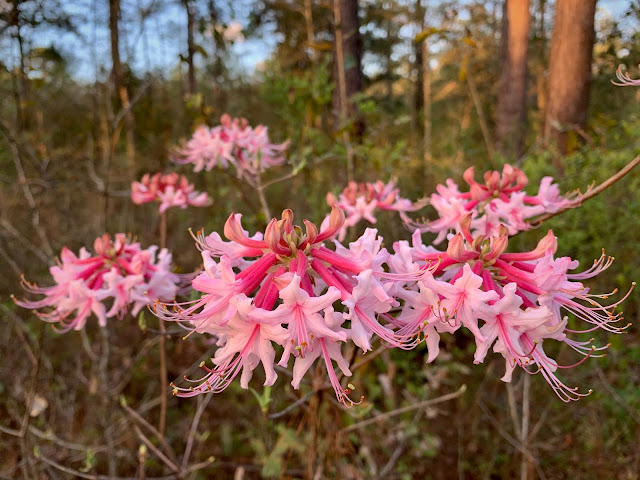By Steven W. Woodmansee, FNPS President
 |
| V. lanceolata, Bog White Violet |
Violets represented by the genus
Viola, although often thought of as northern species, do grow in Florida. Ten native species occur in our fine state, four of which occur in our ten southern counties. Violets are herbs which often form a basal rosette, and have a fat creeping stem (often several inches in length), and usually below ground. All southern Florida species typically grow 4-5 inches in height. Plants typically flower in springtime and are quite noticeable, usually measuring about an inch or more across. Flowers are bilaterally symmetrical, with five petals forming a shape much like a harlequin mask, the center petal often has lines that act as nectar guides. Fruits are a capsule which dehisces (opens up when dry), readily spreading by seed and can be quite abundant where found. Interestingly, violets are also known for their edibility, as flowers may be used in salads.
 |
| V. sororia, Common Blue Violet |
One species,
Viola lanceolata, the Bog White Violet, has the broadest range, in South Florida, having only never been documented from Hendry, Broward, and the Keys. It may be absent from Miami-Dade County, as the habitat for it there may no longer exist. It is found in acidic soils of wet to mesic pine flatwoods, an abundant habitat most elsewhere in Florida. Bog White Violet is easily identified by its white flowers and lance-shaped leaves.
The Common Blue Violet (
Viola sororia) is still extant in Miami-Dade where I have seen it in moist sandy hammocks and homeowner’s yards nearby. It also occurs along the tramways in the Fakahatchee Swamp, and the pinelands in the Big Cypress. Although typically blue flowered, albeit often a pale blue, those found in Miami-Dade County usually possess white flowers. The leaves of this species are cordate (heartshaped). This one readily grows as a lawnweed where it can be quite prolific.
 |
| V. palmata, Early Blue Violet |
The Early Blue Violet (
Viola palmata) is found in mesic flatwoods, and not terribly common in South Florida being found in Collier, Palm Beach, Lee and Charlotte counties. As the scientific name suggests the leaves are strongly lobed, or lyre shaped and the flowers are indeed a deep blue.
 |
| V. primulifolia, Primroseleaf Violet |
The rarest of the four is the Primroseleaf violet (
Viola primulifolia). It has been documented at Collier, Lee, Palm Beach, and Martin counties. I have only observed it in Martin, where it is found in moist flatwoods often trailside. This species has cordate leaves that aren’t quite as lobed as the common blue violet, and has smaller white flowers.
Edited and posted by Laurie Sheldon
Image sources







Comments
I had such fond hopes. Now it seems I need to try to get rid of these lovely critters. I'm not sure it it's sand violet or blue violet or if they're the same. I'm a native of S. Florida, myself, and never heard of violet becoming invasive here, but I surely see plenty of "snow-in-summer," and if it becomes
anything like that, I do need to get rid of it now before it spreads.
Master gardeners are wonderful, but are mostly volunteers from up north that have to look for info in
the same books I can find myself, and I can't find any about this violet
in south florida.